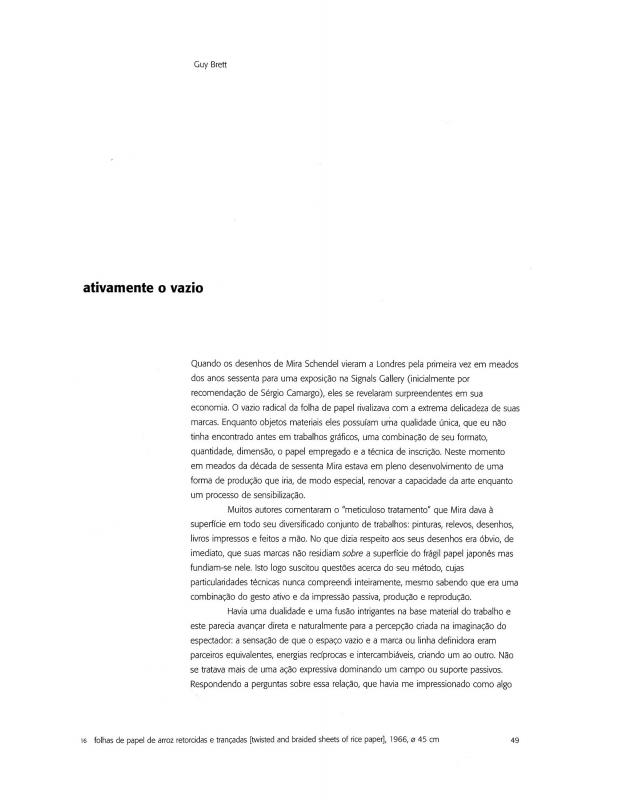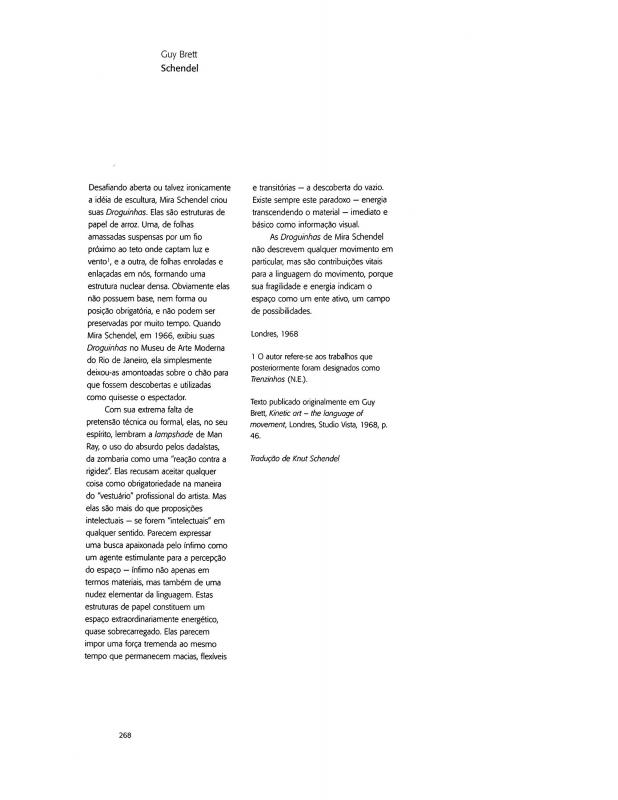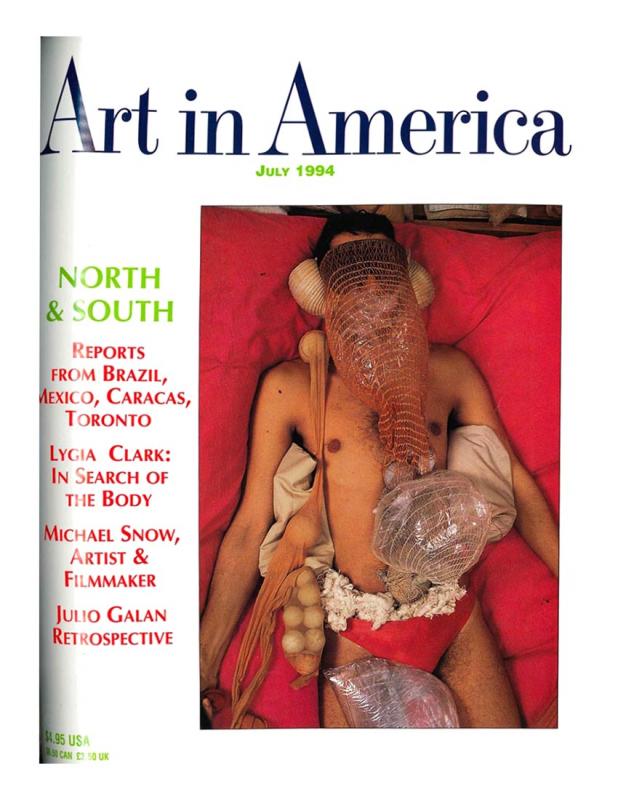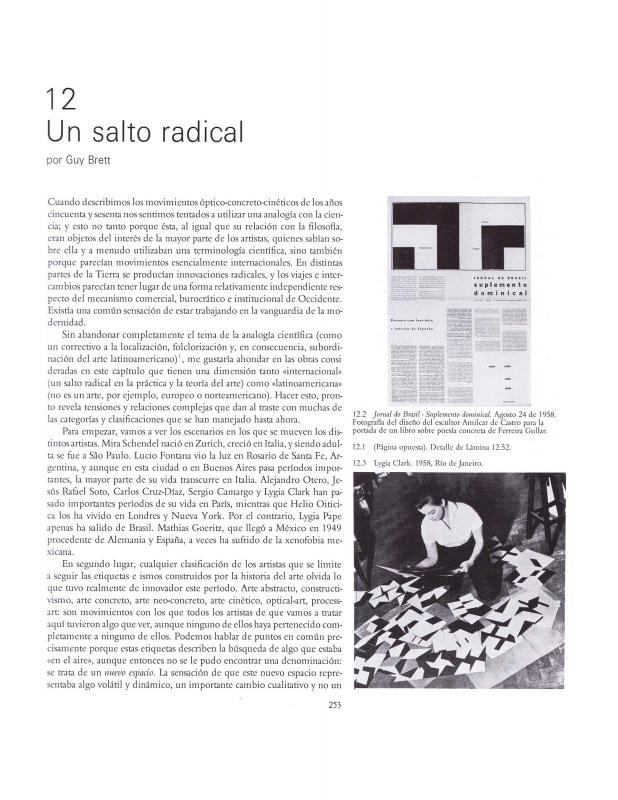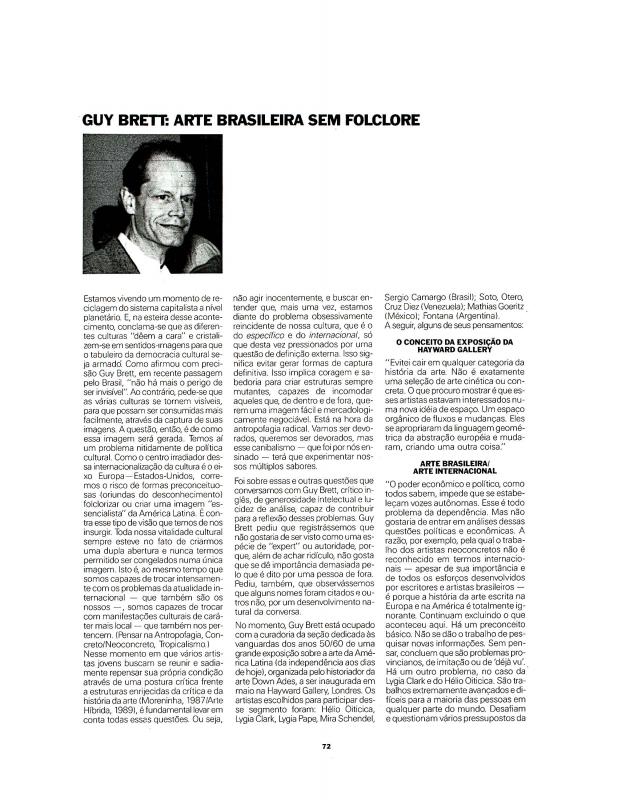Hélio Oiticica was interviewed after his retrospective exhibition at the Whitechapel Gallery in London in 1969. This is one of the first significant articles to document the international impact of this Brazilian artist’s work. The interview is enlivened throughout by the shrewd observations made by Guy Brett, the English critic who has closely followed Oiticica, Lygia Clark, Mira Schendel, and Sérgio Camargo since the early days of their careers.
Hélio Oiticica (1937–80) was a Brazilian Neo-Concrete artist. He started studying painting with Ivan Serpa in 1954 at the Museu de Arte Moderna do Rio de Janeiro. He later joined the Grupo Frente and the Neo-Concrete movement. In addition to his geometric paintings, which he worked on while he was studying with Serpa and was a member of the Grupo Frente, Oiticica produced performance and participatory art. His Parangolés (1964)—capes made with fabrics and recycled materials—were worn by the Mangueira Samba School during their performances. Oiticica also created immersive spaces, such as Nucleus (1959–60), which was an installation constructed from suspended painted wooden slats inspired by the Constructivism of Piet Mondrian. In 1967 Oiticica created the immersive environment Tropicália at the Museum of Modern Art in Rio de Janeiro. Tropicália was an installation consisting of rooms with plants and materials such as water, sand and stones, a parrot, a television set, and various other elements that were representative of Brazilian popular culture. The environment was designed to promote sensory stimulation. Oiticica applied the same principles to Eden, the installation he created in 1969 at the Whitechapel Gallery in London. The name Tropicália was used by Brazilian musicians to describe a new style that combined international music and pop with traditional Brazilian music. The term “Tropicália” was absorbed into popular Brazilian culture and came to signify a uniquely Brazilian essence. In 1970 Oiticica took part in the group exhibition Information at the Museum of Modern Art in New York.
Based in London, the critic Guy Brett (b. 1942) is also a curator and a lecturer on the international circuit. He cofounded a magazine (Newsbulletin of Signals) and a gallery in London together with Paul Keeler, also called Signals. He worked with Mira Schendel to present her solo exhibition at Signals in 1966. Brett has regularly published his essays—which are almost always based on radical or experimental ideas—in international art magazines, and is the author of a number of monographs. His major contributions include his involvement with Kinetic art from its earliest days in Europe and Venezuela. For a broader view of Brett’s thoughts on Brazilian art, see “Uma cronologia de encontros” [doc. no. 1111303]. The British critic has published a number of monographs about Brazilian artists, as follows: on the subject of Mira Schendel’s radical work, “Ativamente o vazio” [doc. no. 1111214] and “Schendel” [doc. no. 1111213]; on the subject of Lygia Clark’s innovations, “In Search of the Body” [doc. no. 1232526]; on his reading of the 1950s and 1960s in Brazil, “Un salto radical” [doc. no. 808389]; and, finally, about the 1970s in Brazil, article written by Márcio Doctors, “Guy Brett: arte brasileira sem folklore” [doc. no. 1110958].


